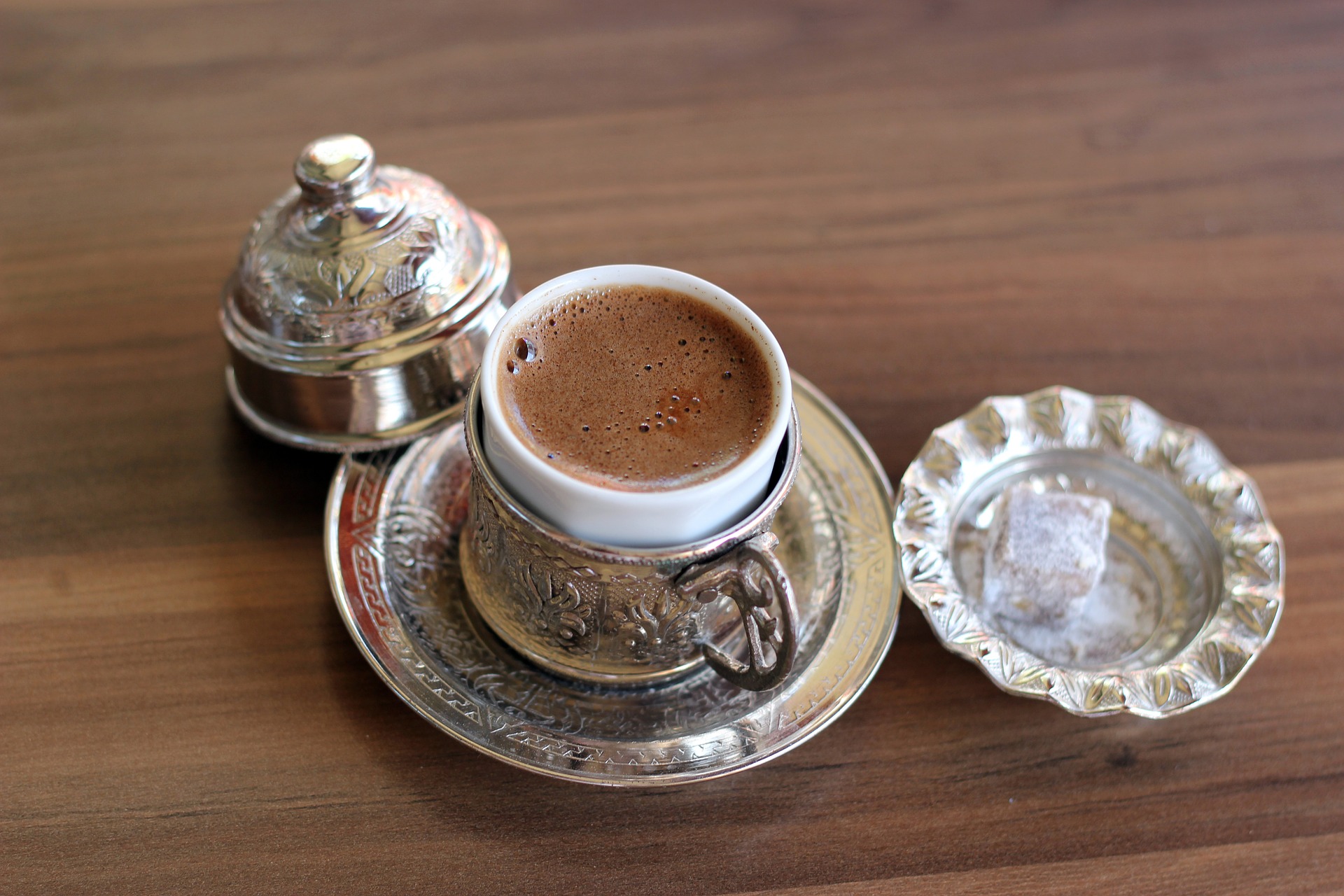One of the ancestral homes of coffee is the city of Kaffa located in the southwest region of Abyssinia. The worldwide known namings, coffee, and caffeine are derived from the name of the city. It became known by the help of the Arabs from the 15th century. The Turks took it over from the Arabs, and although the state has repeatedly banned it, soon the coffee became their most popular luxury good. Initially, mostly soldiers and intellectuals consumed it. Later, however, all Muslims willingly sat for hours in silence while drinking coffee, smoking drugs and tobacco.
The first coffee advocates sipped their drink at home, but later they frequented stores that were created with this special purpose: “coffee houses”. The Turkish women also liked this weak aphrodisiac, just as men. If the husband did not care about getting the right amount of coffee, that was a reason for divorcing. The wealthy families had a special coffee-maid, who only had to worry about the preparation of the black drink.
The brewing is still a real ceremony in the Turkish kitchen, it is usually carried out by a family member who has the most sense to it. After a thorough roasting when the beans are already bright and dew, it is poured on a clean tablecloth and covered. The roasted coffee is masticated in a cylindrical manual coffee grinder (kahve degirmeni) two or three times until the desired fineness is achieved.
The cooking takes place in a long-handled yellow copper vessel, the cezve. Its size depends on how many cups of water it can hold (usually one to four). The Turkish people always use a cezve that matches the amount of water, because you can not make a properly foamy coffee in a two or four-person vessel.
The coffee is brewed together with sugar (in some regions of Anatolia it is even flavored with crushed cardamom) because it is not stirred in the cup. Therefore when you order, you have to tell in advance if you want the coffee without sugar (sade), just sweet (az şekerli), moderately, with only one spoonful of sugar (Orta şekerli) or sweet (cok şekerli).
A teaspoon of ground coffee is added to each cup of water. They pour the cold water in the cezve, lay on the top the sugar and the coffee and then gently mix it with the water, without the spoon reaching the bottom of the bucket. It is heated on charcoal or medium heat while it is stirred from the outside inwards, which results in a foam island in the middle.
Then one-third is poured into the cups (mainly the foam) to pre-heat and the cezve is put back on the fire. They continue to collect the foam in the middle with the spoon. As the coffee begins to bubble before boiling over, it is immediately removed from the heat and gauged in the cups. It has to served hot, with enough foam on the top. We should wait one minute before consumption until the grounds settle to the bottom of the cup, but one spoonful cold water can hasten the process.

